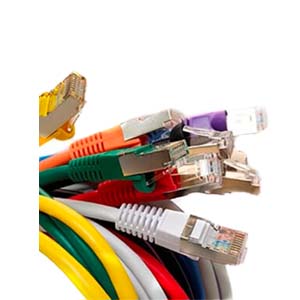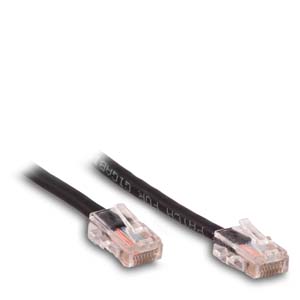Cables Blog
How Do Fiber Optic Cables Work?
Fiber Optic Cables at Cables.com
Fiber optic cables, or optical fiber, work by transmitting data through pulses of light that travel through glass filaments at the speed of light.
by Vikas Dayal • December 27, 2024
Custom Fiber Optic Cables, Fiber Optic Cables
Fiber optic cables, or optical fiber, work by transmitting data through pulses of light that travel through glass filaments at the speed of light. Fiber optic cable is much faster than the fastest copper network cables.
Fiber optic cables are the backbone of modern communication, powering everything from high-speed internet to medical imaging. These marvels of engineering use light to transmit data quickly, efficiently, and over long distances. In this article, we’ll break down how fiber optic cables work and why they are vital in today’s connected world.
What Are Fiber Optic Cables?
Fiber optic cables are made of extremely thin strands of glass or plastic fibers, designed to carry light signals. Each cable consists of three main components:
- Core: The central part of the cable through which light travels.
- Cladding: A protective layer surrounding the core that reflects light back into it, ensuring minimal signal loss.
- Buffer Coating: An outer protective layer that shields the core and cladding from damage and environmental factors.
The core and cladding work together to transmit data using light pulses, enabling fast and reliable communication.
The Science Behind Fiber Optics
The functionality of fiber optic cables hinges on the principle of total internal reflection. Here’s how it works:
- Light signals, generated by lasers or LEDs, enter the fiber optic core.
- The cladding has a lower refractive index than the core, causing the light to bounce back into the core whenever it tries to escape.
- These repeated reflections allow light to travel through the cable with minimal loss, even over long distances.
Fiber optic cables are designed to maintain the integrity of these light signals, ensuring clear and fast data transmission.
Types of Fiber Optic Cables
Fiber optic cables are generally categorized into two types:
- Single-Mode Fiber (SMF):
- Features a smaller core (approximately 9 microns in diameter).
- Transmits light in a single path.
- Ideal for long-distance communication and high-bandwidth applications, such as undersea internet cables.
- Multi-Mode Fiber (MMF):
- Features a larger core (50-62.5 microns in diameter).
- Allows multiple light paths, leading to higher data capacity but shorter transmission distances.
- Commonly used in short-range applications, such as local area networks (LANs).
Each type of cable serves specific purposes, making it essential to choose the right one for your needs.
Fiber Optic Cable at Cables.com
Cables.com's Datacomm single mode cables offer exceptional quality at the lowest prices in the industry. The biggest draw of single mode fiber optic cable is that it offers near-unlimited bandwidth. Single mode fiber optic cables like our OS2 LC to LC 9/125 Micron cable are manufactured with high quality Corning glass cores, and feature ceramic ferrules to ensure optimal data transfer. Their sturdy yellow jackets are resistant to dust, moisture, and rodents. If you are looking for a network patch cable that is virtually immune to electronic interference and can offer great speeds at long distances, this Fiber Patch Cable is your ideal choice.

On the other hand, while single mode fiber cable only allows for one type of light mode to be transported at any given time, multi mode fiber cable allows for multiple types. Though our multi mode fiber optic cables won't transmit data as quickly as their single mode counterparts, they're priced more affordably and still able to handle high speeds. Our Datacomm-manufactured OM3 cables are capable of transmitting data of speeds up to 40Gb up to 150 meters, while our OM4 cables can achieve a performance of 100G over 100 meters. This SC to SC OM4 40GB fiber optic cable features an aqua blue 50/125 riser rated jacket and quality duplex SC connectors on either end.

Advantages of Fiber Optics
Fiber optic technology offers several advantages over traditional copper cables:
- Speed: Light travels faster than electrical signals, enabling high-speed data transmission.
- Bandwidth: Fiber optic cables can carry significantly more data, making them ideal for streaming, video conferencing, and other data-heavy tasks.
- Distance: Unlike copper cables, fiber optics maintain signal strength over long distances without the need for signal boosters.
- Reliability: Fiber optic cables are immune to electromagnetic interference, ensuring a stable connection.
- Security: It’s harder to tap into fiber optic lines, providing better data security.
Real-World Applications
Fiber optic cables play a crucial role in various industries:
- Telecommunications: They form the backbone of high-speed internet, telephone, and cable TV services.
- Healthcare: Used in endoscopy and other medical imaging technologies.
- Data Centers: Essential for high-speed data transfer between servers.
- Military and Aerospace: Provide secure and reliable communication in challenging environments.
As technology evolves, fiber optics continue to pave the way for innovations like 5G networks, smart cities, and quantum computing.
Shop Cables.com
Fiber optic cables are a cornerstone of modern infrastructure, offering unmatched speed, reliability, and efficiency. Whether you’re building a network for your business or upgrading your home internet, fiber optics provide a future-proof solution.
We want to meet all your fiber optic network needs, from the cables themselves to the tools and accessories you'll need to keep your network operating at its very best. We can even manufacture custom fiber optic cable to your specifications. If you have any questions, feel free to Contact Us or email us at sales@cables.com! We look forward to working with you.
SHOP NOW: OM1 Fiber Optic Cables - OS2 Fiber Optic Cables - Custom Color Fiber Optic Cables











